Home » How Many Types of Circuit Breakers?
A circuit breaker is a safety device that is used in appliances to protect the electric circuit from damages that can be caused by overload or a short circuit. It is an automatically operated electrical switch that breaks the flow of electricity when a fault is detected in a device.
A circuit breaker is different from a fuse as it can be reset manually or automatically after each use however a fuse needs to be replaced after every usage. Hence, circuit breakers are more convenient to use and they come in a variety of different sizes for several types of devices.
Based on different areas, circuit breakers are of different types which serve varying purposes.
In this blog, we have provided all the necessary information about the different kinds of circuit breaker, their usage, properties, and in-depth knowledge of the mechanism too. Altogether, if you are looking for a complete guide on circuit breakers, you are at the right place!
Before we head towards the classification of circuit breakers, it is necessary to understand the important characteristics of a circuit breaker which are listed below.
Circuit breakers are of different types and are categorized based on various parameters. The classification of circuit breakers is provided below:
On the basis of voltage, or the amount of push in the conductor that makes the electric charges move, the different kinds of circuit breakers are:
All of these circuit breakers have their subtypes which are discussed further in this blog.
On the basis of interruption medium, circuit breakers are of the following types:
Based on the way of installation, the circuit breakers are of two types:
Based on where these circuit breakers are installed, they are of two types:
The other kinds of circuit breakers are as follow:
This is the first basis of circuit breaker classification which depends on the amount of operating voltage of the circuit breaker. In simpler words, it means the amount of voltage a circuit breaker can allow and at what voltage will it break or open the circuit and stop the flow of current through it.
Depending on this criterion, there are three principal types of circuit breakers:
Low voltage circuit breakers are further classified in the following categories.
The Molded Case Circuit Breakers are used for a current rating up to 1600A. The main advantage of this kind of circuit breaker is that one can adjust the time setting and the current setting. These occupy less space in the electrical panel. They are maintenance-free and suitable for industrial as well as commercial purposes. They come with an adjustable trip feature.
The Air Circuit Breaker or ACB are used for a current rating up to 6300A which is much higher than MCCB or MCB. As one can identify from the name, these circuit breakers use air as the medium for extinguishing the medium of arc. In other words, it operates at atmospheric pressure. They provide protection against short-circuiting and overloading.
The Miniature Circuit Breaker or MCB is an electromagnetic device that provides protection against short circuits and overloading by switching off itself in adverse conditions to prevent fire and other hazards. These are used in places of low voltage and are used for current ratings up to 125A. They are low in maintenance and can quickly rest, unlike a fuse. It does not have adjustable tripping qualities like MCCBs.
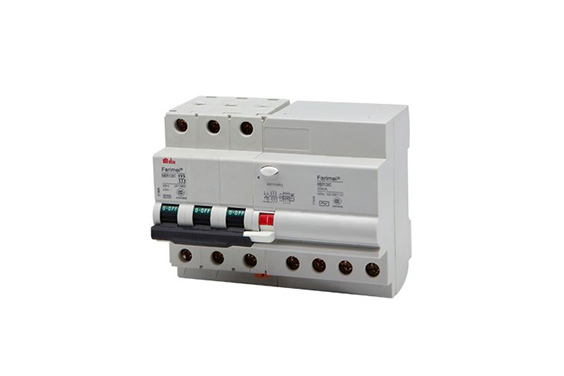
Residual Current Circuit Breaker or RCCB is a safety device that breaks the circuit instantly when it detects a fault or the current exceeds the normal specified level. These circuit breakers work on the principle of Kirchhoff’s law which states that the amount of incoming current should be equal to the amount of outgoing current. It mainly provides protection against earth leakages, and electric shock caused by direct contact.
The medium voltage circuit breaker and high voltage circuit breaker are further classified in the following ways.
The oil-less circuit breaker does not use any kind of oil for extinguishing the medium of arc as in the case of an oil circuit breaker. Rather they use other methods to blow out the arc. Hence, they are considered safer than the oil circuit breaker because they are not flammable since no oil is present.

The vacuum circuit breaker uses vacuum for the extinction of arc. This type of circuit breaker is used in medium voltage applications and here the arc extinction takes place inside bottles, in the presence of a vacuum. These are generally used in the power sectors in a substation.
In case of a fault, the contacts of the circuit breaker move apart which creates an arc. These current-carrying contacts when moving apart, there is an ionization because of the high temperature of the connecting parts. Ionization results in the filling up of the space with vaporized positive ions. The metallic vapors, ions, and electrons condense on the surface of the circuit breakers’ contacts instantly by which the dielectric strength is recovered and the arc gets extinguished quickly.
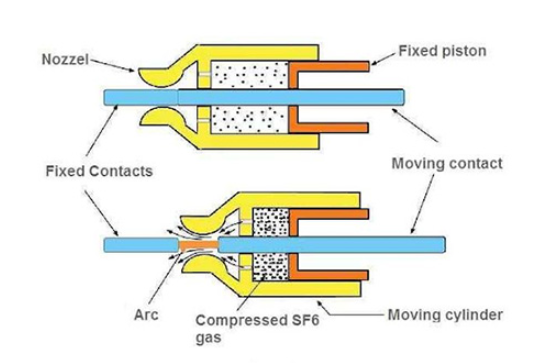
The sulfur hexafluoride circuit breaker or SF6 circuit breaker is also known as a gas circuit breaker. As suggested by the name, SF6 gas is used for extinguishing the arc. This gas possesses great arc extinguishing capabilities.
In this type of circuit breaker, the two contacts operate in sulfur hexafluoride gas. When the breaker operates, these two contacts move apart and an arc is created in between. The free electrons in the path of the arc are rapidly absorbed by the resulting high-pressure flow of SF6 gas. High dielectric strength is quickly built in the medium between the two contacts which causes the arc to blow out.
An air blast circuit breaker uses a blast of air for the extinguishing of the arc. These are utilized for medium to high-voltage appliances. Compressed air or gas is used for blowing out the arc. Gases such as nitrogen, carbon dioxide, hydrogen, and freon are mainly used.
In this type of circuit breaker, the compressed air is stored in a tank and when a fault occurs, the gas is released in high-pressure through a nozzle that is fixed to the contact of the circuit breaker and the arc is blown-out.
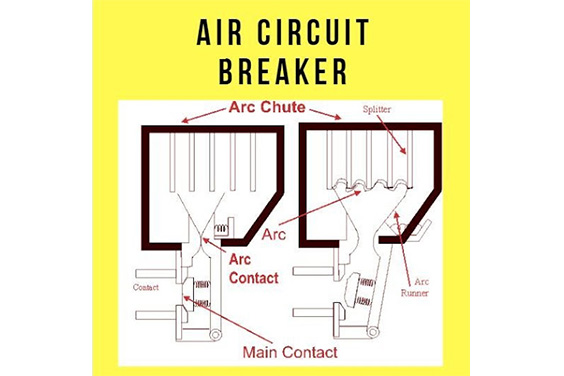
An air break circuit breaker employs the principle of high resistance and static air is used for extinguishing the arc. This type of circuit breaker is generally used in low voltage appliances, up to 15KV. These require no maintenance and provide high levels of safety from overcurrent and short-circuits.
Here, the moving away of the contacts, the generation of an arc, and the blowing out of it, all takes place in the air at atmospheric pressure. Air break circuit breakers are of two types: plain air break circuit breaker and air blast circuit breaker which is already discussed above.
As the name suggests, oil circuit breakers use a dielectric or transformer oil for quenching the medium of the arc. They are the oldest type of circuit breaker. Mineral oil is mainly preferred due to its insulating qualities. They operate at a very fast rate and are used in transmission networks.
However, the major drawback is that these are flammable since oil is involved. These can be subdivided into two categories, oil bulk circuit breaker, and low oil circuit breaker. Both of them are discussed below.
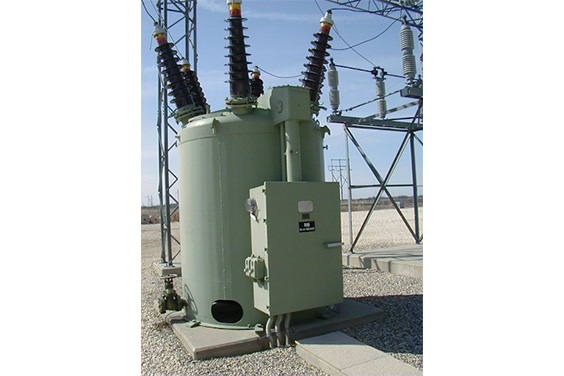
Oil bulk circuit breaker uses a large quantity of oil for the extinguishing of the arc. Since the tank of this type of circuit breaker is held at ground potential, it is also known as a dead tank circuit breaker. Transformer electric oil is used for the purpose of insulation in this kind of circuit breaker. This oil is used as the insulation medium between two current-carrying contacts and the earthed parts of the circuit breaker.
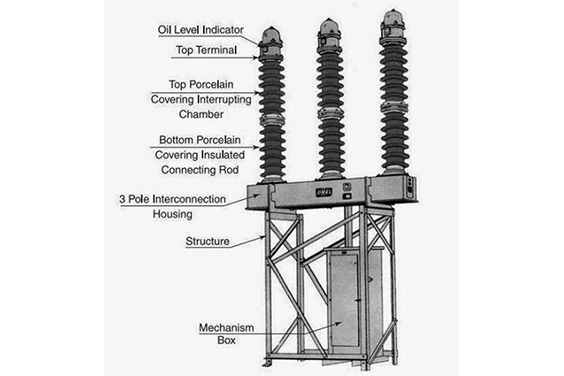
A low oil circuit breaker or minimum oil circuit breaker uses less amount of transformer oil as compared to the oil bulk circuit breaker for the extinction of arc. To insulate the oil tank from the ground, it is placed on a porcelain insulator.
The oil here serves only one purpose that is the extinction of arc unlike in the case of oil bulk circuit breaker.
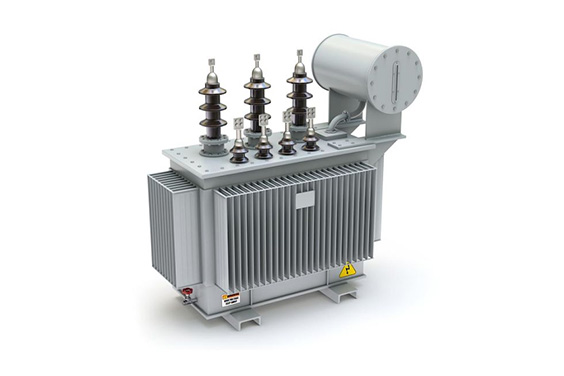
As mentioned earlier, they are the leader in operational voltage and functions above 800KV which is not required everywhere but they possess several advantages. Only certain leading powers of the world utilize these circuit breakers.
On the basis of the interruption medium used for the extinction of arc, circuit breakers are of various types. These have been discussed below.
A vacuum circuit breaker uses a vacuum for the blowing up of arc. The current-carrying contacts operate in a vacuum medium.
The sulfur hexafluoride circuit breaker or SF6 circuit breaker uses the sulfur hexafluoride gas for arc extinction. This is relatively better as compared to other mediums for the quenching or arc such as air or oil.
The sulfur hexafluoride has highly efficient arc extinguishing properties because of its high dielectric strength, electronegative nature, and arc interruption capability. It is also non-toxic in its pure form but it has a high potential for global warming which makes it unsuitable for the environment. The release of SF6 during its operation can be controlled in some ways but today, other gases are increasingly used in the place of SF6.
Research shows that though CO2 is inferior to SF6 in the dielectric strength and arc interruption capacity it is still superior to nitrogen gas. CO2 holds the potential to be an alternative form of gas to be used in the place of SF6 in Gas Circuit Breakers (GCBs).
An air blast circuit breaker uses a blast of air from a tank filled with compressed air to extinguish the arc.
An air break circuit uses the air at atmospheric pressure for the extinction of arc.
Oil bulk circuit breaker is a type of oil circuit breaker which uses oil as the interruption medium for quenching the arc as well as the insulating medium between two connectors. Thus, it serves dual purposes and uses a larger quantity of oil.
A low oil circuit breaker or minimum oil circuit breaker uses less amount of oil as compared to an oil bulk circuit breaker. Here also, oil is used for the extinction of arc.
Circuit breakers are also classified based on their place of installation. Depending on this, there are two types of circuit breakers: indoor circuit breaker and outdoor circuit breaker. The key difference between these circuit breakers is usually the enclosure and the packaging structure. The operation, interrupting mechanism, and current-carrying parts are more or less the same in both types of circuit breakers.
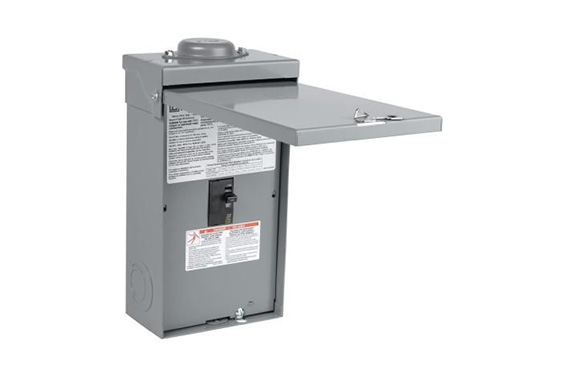
An outdoor circuit breaker is one that is designed to use outdoors. This type of breaker is installed at an outdoor location without a roof. The external enclosure arrangement in these types of circuit breakers is stronger than the indoor circuit breakers. They have the potential to withstand wear and tear, unlike indoor circuit breakers.

An indoor circuit breaker is designed to be used only in the inside of buildings and at weather-resistant places. This type of circuit breaker functions at a medium voltage with metal-clad switchgear and is not suitable for outdoor purposes.
The typical type which is used is an indoor vacuum circuit breaker in which the extinguishing of the arc takes place in a vacuum medium. These are light weighted, have a long life span, require less maintenance, are more proficient, and are less expensive. These are used in schools, homes, hospitals, buildings, etc.
On the basis of the manner of installation of the circuit breakers, these are of two types: fixed type circuit breaker and withdrawal or draw-out type circuit breaker.
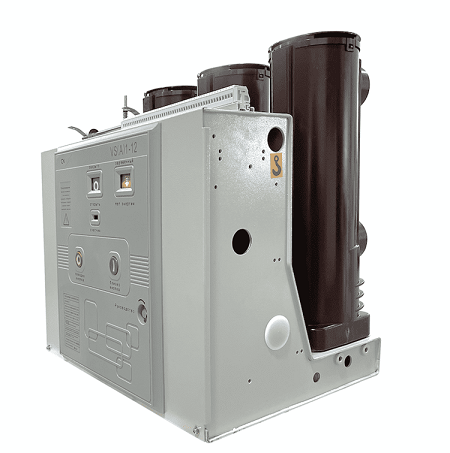
A fixed type circuit breaker is one that is wired to the load frame and is well bolted in its enclosure. Sectional types of bus bars or wires are used for supplying power to this type of circuit breaker. These are front mountable and have fewer complex parts as compared to a withdrawable circuit breaker.
Fixed-type circuit breakers are used for voltages up to 600V or more. They are cheaper than withdrawable circuit breaker and have low maintenance. A commonly used example is a fixed vacuum circuit breaker.
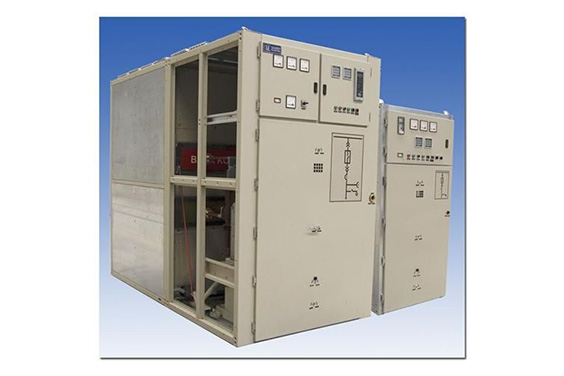
A withdrawable or draw-out circuit breaker has two parts. The base is bolted to the enclosure and wired to the frame in the same manner as a fixed type circuit breaker but the actual circuit breaker is slid into the base and connects electrically with it.
This type of draw-out circuit breaker functions at a higher voltage up to 4000A. There are additional finger clusters in it and it also has a larger size than that of a fixed type circuit breaker. A draw out breaker is also higher in maintenance.
Apart from these main types of circuit breakers which are listed above, there are other types of circuit breakers such as embedded poles types circuit breakers, and insulating cylinder circuit breakers. These are discussed at length, below.

The embedded type circuit breaker is those where the circuit breaker is used with embedded poles. These embedded poles or vacuum interrupters provide better protection against environmental adversities and have high dielectric strength too.
The most common type is embedded poles type vacuum circuit breaker. It is used in metallurgical departments, power departments, mines, and other areas of industries.
These are reliable, assemble-friendly, and resist environmental pollution too but they are also expensive as compared to the usual vacuum circuit breaker. Embedded poles type high voltage vacuum circuit breaker has a no-maintenance concept.
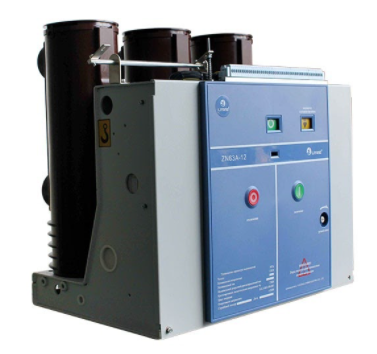
An insulating cylinder circuit breaker uses an insulation cylinder mainly made of epoxy raisin which is used with a circuit breaker, mainly with vacuum circuit breakers to increase their features and efficiency. These are used for medium and high voltages and are available for both, indoor and outdoor circuit breakers for providing high levels of stability, intensity, and insulation.

A vacuum circuit breaker is one in which the quenching of arc takes place in a vacuum medium. A vacuum chamber is present which is used as the interruption medium.
For the operation of a circuit breaker, the energy is created by the operating system. The actuating circuit, the energy storing medium, and the interlocking systems are the major components of an operating system. Following are the operational systems used by a high and medium voltage circuit breaker.
These circuit breakers use sulfur hexafluoride gas for the extinction of arc and this gas has highly efficient arc quenching capacities. It also comes with other major advantages like no fire hazards, efficient functioning, and others.
The different types of sf6 circuit breakers are discussed here.
Non-Puffer Piston Circuit Breaker
This is the most common type of SF4 circuit breaker. Here the two contacts will be already surrounded by SF6 gas from the beginning. Once there is a fault, the contacts separate and the arc is struck between them because the surrounding medium gets ionized. The pressurized gas will enter the arcing chamber when the valve connected to the SF6 gas tank will open up. This gas will further increase the air pressure inside the chamber and the SF6 gas will quench the arc.
Single-Puffer Circuit Breaker
The single puffer circuit breaker is popularly used for voltages from 13.6KV to 760KV. This type of circuit breaker uses a movable cylinder that moves along the moving contact and this compresses the gas inside of it. The pressure will be built and afterward, the gas will be released through a nozzle due to gas pressure and will extinguish the arc.
Double-Puffer Circuit Breaker
The double puffer circuit breaker has a similar design to that of an air blast circuit breaker. In this, the gas from the high-pressure area moves to the low-pressure area through a nozzle in order to quench the arc. This type of circuit breaker is rarely in use today.
On the basis of the structural design, the SF6 circuit breakers are of two types: Dead tank circuit breaker and Live tank circuit breaker. These are explained below.
Dead Tank Circuit Breaker
In a dead tank circuit breaker, the enclosed tank is at a ground potential which is surrounded by the insulating and interrupting mediums. In simpler words, the tank is at a dead potential. These tanks are most commonly used in the US.
Live Tank Circuit Breaker
The live tank circuit breaker has the tank which contains the interrupting and insulating medium housed at a higher potential than the ground. These are commonly used in Asia and Europe.
It becomes a daunting task to go through different websites in order to gain information about a specific type of circuit breaker. Thus, we have made this blog to provide all the information that one needs to consider before embarking on the task of dealing with circuit breakers.
This blog is a complete guide on the different kinds of circuit breakers, their working mechanism, applications, voltage capacity along with the advantages and disadvantages which will help one to have an in-depth knowledge of all types of circuit breakers.
Equip your business with long-lasting switchgear components that respond to your needs and smoothen electrical operations at affordable costs.